If your PC won’t boot after the restart, use the solutions provided in this article. To get out of this issue, users have to force shut down their Windows 11/10 PC. This problem occurs due to hardware or software issues.
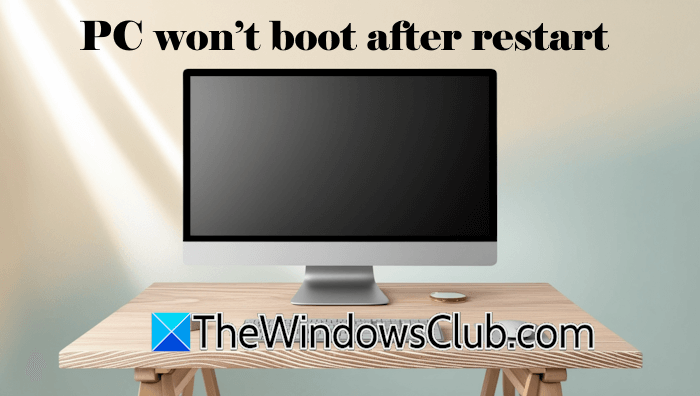
PC won’t boot after restart on Windows 11/10
Use these proven fixes if your Windows 11/10 PC won’t boot after the restart.
- Hard reset your PC
- Clear CMOS
- Run Startup repair
- Check your RAM
- Update BIOS
- Disable Fast Startup
- Disconnect your hard drive(s) (if applicable)
- Clean install your graphics card driver
- Perform System Restore
- Hardware fault.
All these fixes are explained below in detail:
1] Hard reset your PC
The first step is to hard reset your PC. Follow these instructions:
- Turn off your PC instead of restarting it.
- Disconnect the power cord. If it is a laptop, disconnect its charger and remove its battery (if removable).
- Press and hold the power button for up to 45 seconds.
- Connect the power cord or charger and turn on your PC or laptop.
Now, check if the issue occurs.
2] Clear CMOS
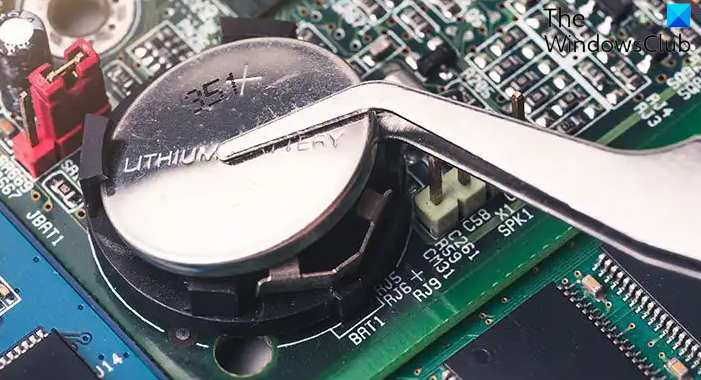
Clearing CMOS helps fix boot issues. Completely turn off your PC and remove its power cord to avoid electric shock. Now, open your computer case and look for a small coin-shaped battery. It is the CMOS battery. Gently pull it out of the socket and wait for a few minutes. This step will also reset the BIOS to default values. Now, put the CMOS battery into the socket with the correct polarity. Turn on your computer and check if the issue persists.
3] Run Startup repair
Startup Repair is a built-in troubleshooting tool in Windows 11/10 that helps fix problems preventing your system from booting normally. Since your computer won’t boot after restart, you can run this tool and see if it helps.
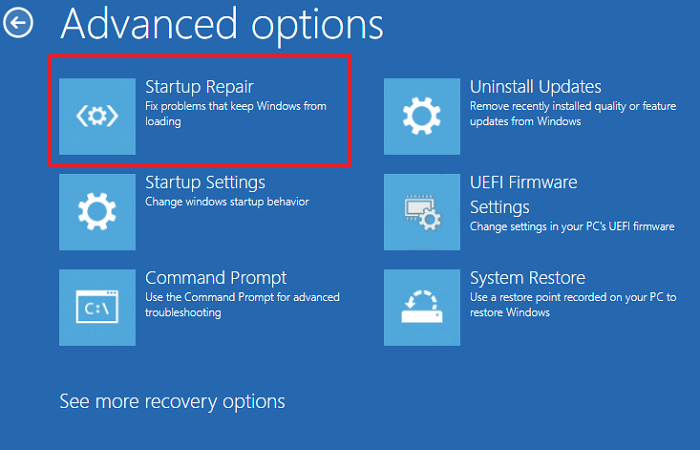
To use this tool, you need to enter Windows Recovery Environment. The easiest way is to press and hold the Shift key and restart your computer. However, you cannot use this method right now. Therefore, force shut down your PC and turn it on. Now, use Windows Settings to boot into the Windows Recovery Environment. Once you are in WinRE, select Advanced options > Startup repair.
Do not turn off your PC until the startup repair is completed.
4] Check your RAM
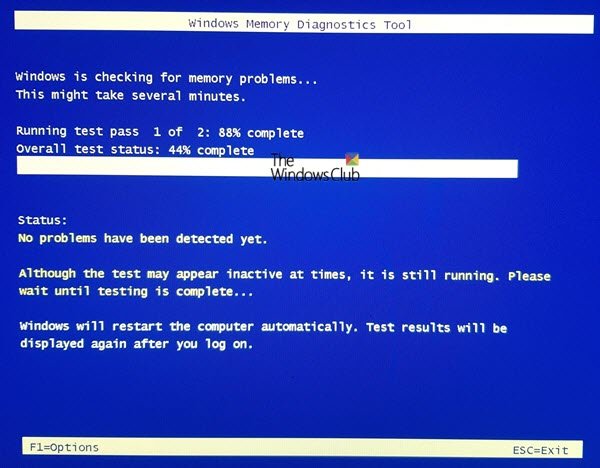
A faulty RAM shows many symptoms, such as boot issues. Your RAM might be faulty. If you have more than one RAM stick, restart your PC with one RAM stick at a time. In this way, you can find the faulty RAM stick. Alternatively, you can also run the Memory Diagnostic Tool to test your RAM. If your RAM is faulty, replace it.
5] Update BIOS

Sometimes, outdated BIOS causes issues on a Windows computer. Open the System Information tool and check the BIOS version. Now, visit the official website of your computer manufacturer and check the BIOS version available there. If an updated BIOS version is available, download and install it. Provide a continuous power supply to your computer during the BIOS update.
If you have a laptop, connect its charger and turn on the power supply even if it is fully charged. Power supply interruption during the BIOS update can damage your motherboard.
6] Disable Fast Startup
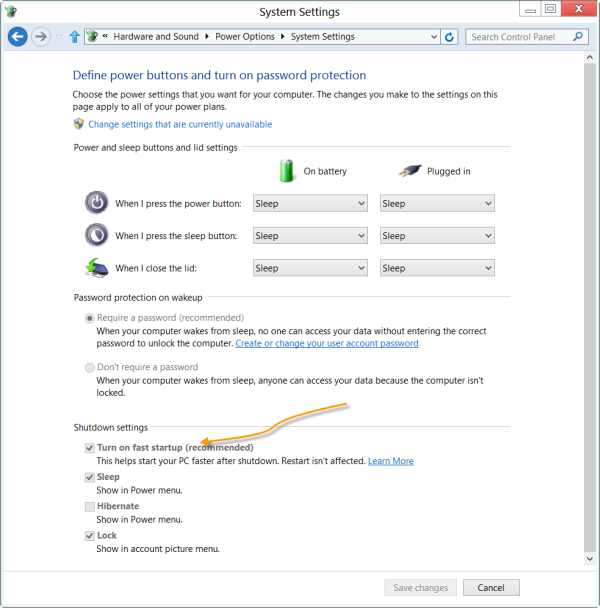
The next fix is to disable Fast Startup. Fast Startup reduces the boot time, but it sometimes causes issues. Hence, disabling it can help.
7] Disconnect your hard drive(s) (if applicable)
The problem may be with your hard drive. If you have two hard drives, copy data from another hard drive to an external hard disk. Now, disconnect the primary hard disk and install Windows on another hard disk. Now, check if the issue occurs this time. This will let you know whether your hard drive is faulty.
You can also run the chkdsk scan to fix errors on your hard drive.
8] Clean install your graphics card driver
The problem may also be associated with your graphics card driver. Perform the clean installation of your graphics card driver and see if it helps. Download the latest version of your GPU driver from the official website of your computer manufacturer. Now, download and install the Display Driver Uninstaller.
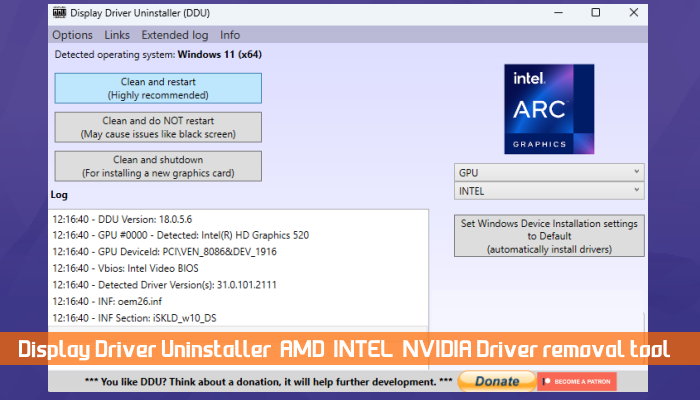
Use the DDU tool to completely remove your GPU driver. Now, run the installer file to install the graphics card driver.
9] Perform System Restore
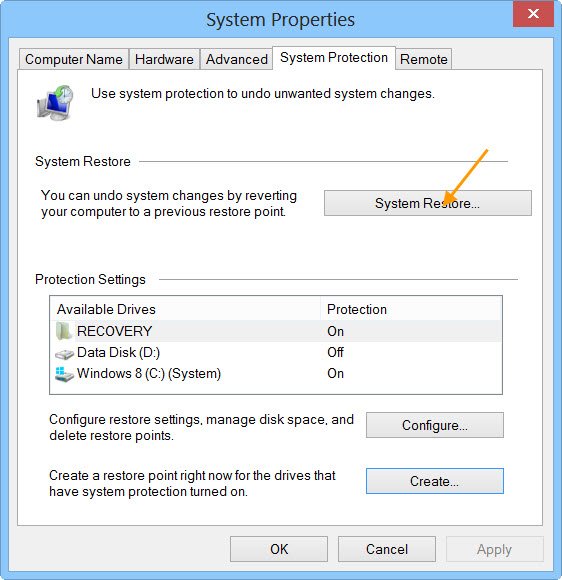
The System Restore tool helps you restore your system to the previous working state. Run this tool and select the restore point created on the date before which the problem did not exist.
10] Hardware fault
If the problem persists, your system might have a hardware fault. For further assistance, take it to a professional computer repair shop.
Read:
Why is my PC stuck on restart?
Both hardware and software issues can cause your PC to be stuck on the restart, such as corrupt system image files, driver issues, faulty RAM, a failing hard drive, etc. Sometimes, it can be due to overheating. Also, check your power supply and scan your system for malware infection.
How to boot in Safe Mode?
You can boot in Safe Mode by using the MSConfig tool. Launch the app and go to the Boot tab. Now, enable the Safe Boot checkbox. Select the required radio button and click Apply. Close the MSConfig app and restart your system.
Windows 11 won’t boot after shutting down
If your Windows PC won’t boot after shutting down, disable Fast Startup, check for Hardware Issues, perform a power cycle by unplugging the power cord, waiting a few minutes, and plugging it back in, run System File Checker, run Startup Repair and see. If the problem persists, it might be related to the CMOS battery.
Read next: Computer shuts down when playing or watching videos.